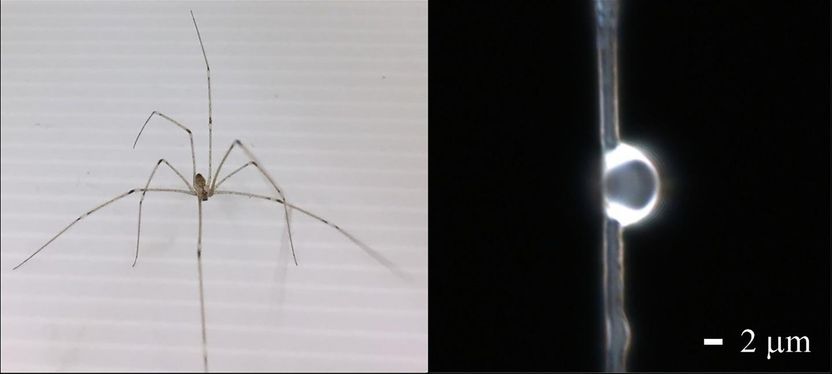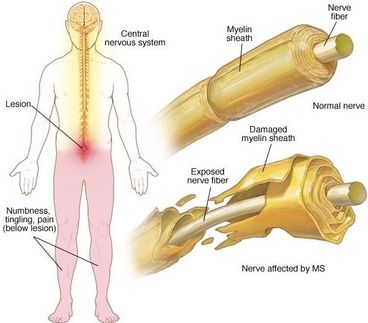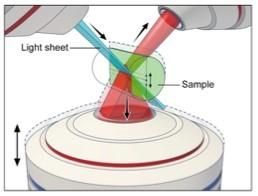Spider silk can create lenses useful for biological imaging
Lenses built on dragline spider silk generate a special type of light jet that can image large biological areas with high resolution
Spiders -- what are they good for? The answer, it turns out, is more than just insect control.

An image of the spider used in the study and the dome lens generated on its dragline silk.
Cheng-Yang Liu
Spider silk is useful for a variety of biomedical applications. It exhibits mechanical properties superior to synthetic fibers for tissue engineering, and it is not toxic or harmful to living cells.
One unexpected application for spider silk is its use in the creation of biocompatible lenses for biological imaging applications. A team of researchers from Tamkang University and National Yang-Ming University in Taiwan describes the feasibility of creating lenses capitalizing on the properties of natural spider silk material in the Journal of Applied Physics, from AIP Publishing.
A spider can spin several different types of silks, each with different properties and functions. To create the spokes of their web, spiders use a type of silk known as dragline silk.
"Dragline silk is an interesting natural material because of its significant features, such as high elasticity, great toughness and large tensile strength," said Cheng-Yang Liu, one of the authors on the study and a professor at National Yang-Ming University. Compared to its weight, the strength of dragline silk is greater than steel.
The authors collected smooth, uniform dragline silk from Pholcus phalangioides spiders, commonly known as daddy longlegs, and dripped a resin onto the silk fiber. As the resin condensed on the fiber, the wetting properties of the silk naturally formed it into a dome shape, which they found could be used as an optical lens. The mechanical and optical properties of the silk also make it ideal for supporting the lens.
When they shined a laser onto the lens, it generated a high-quality photonic nanojet -- a type of beam that can provide large-area, super-resolution imaging for biomedical applications. By tuning the length of time the silk spends under the resin drip, the size of the dome lens can be changed, allowing the photonic nanojets to be optimized for the desired type of imaging.
"The dome lens with flexible photonic nanojets is suitable for imaging the nanoscale objectives in different depths within biological tissue," Liu said.
After additional testing, the researchers hope this type of spider silk-based lens can be used to deliver light for biological imaging and operation.
Original publication
Other news from the department science

Get the analytics and lab tech industry in your inbox
By submitting this form you agree that LUMITOS AG will send you the newsletter(s) selected above by email. Your data will not be passed on to third parties. Your data will be stored and processed in accordance with our data protection regulations. LUMITOS may contact you by email for the purpose of advertising or market and opinion surveys. You can revoke your consent at any time without giving reasons to LUMITOS AG, Ernst-Augustin-Str. 2, 12489 Berlin, Germany or by e-mail at revoke@lumitos.com with effect for the future. In addition, each email contains a link to unsubscribe from the corresponding newsletter.






















































